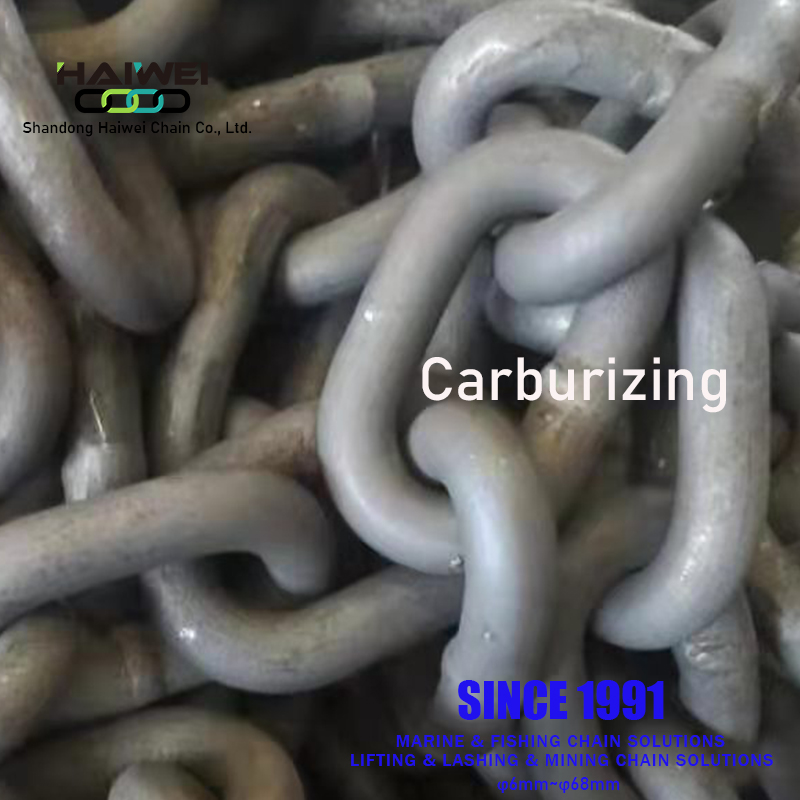Carburizing


Carburizing: it is a kind of metal surface treatment. Carburizing is mostly low carbon steel or low alloy steel. The specific method is to put the workpiece into the single-phase austenite area with active carburizing medium and heat it to 900-950 ℃. After holding for enough time, the active carbon atoms decomposed in the carburizing medium penetrate into the surface of the steel part, so as to obtain high carbon on the surface, The heart remains its original composition. Similarly, there is low-temperature nitriding treatment. This is a common heat treatment process for metal materials.
Carburizing refers to the process of making carbon atoms penetrate into the steel surface layer. It also makes the low-carbon steel workpiece have the surface layer of high-carbon steel, and then after quenching and low-temperature tempering, the surface layer of the workpiece has high hardness and wear resistance, while the central part of the workpiece still maintains the toughness and plasticity of low-carbon steel.
The material of carburized workpiece is generally low carbon steel or low carbon alloy steel (carbon content less than 0.25%). After carburizing, the chemical composition of the steel surface can be close to that of high carbon steel. After carburizing, the workpiece must be quenched to obtain high surface hardness, high wear resistance and fatigue strength, and maintain the strength and toughness of low carbon steel in the heart, so that the workpiece can withstand impact load. Carburizing process is widely used in mechanical parts of aircraft, automobile and tractor, such as gear, shaft, camshaft and so on.
Carburizing process in China can be traced back to 2000 years ago. It was first carburized with solid carburizing medium. Liquid and gas carburizing appeared and was widely used in the 20th century. The United States began to use rotary hearth furnace for Gas Carburization in the 1920s. In the 1930s, continuous gas carburizing furnace began to be used in industry. In the 1960s, high temperature (960 ~ 1100 ℃) gas carburizing developed. In the 1970s, vacuum carburizing and ion carburizing appeared.
According to different carbonaceous media, carburizing can be divided into gas carburizing, solid carburizing, liquid carburizing and carbonitriding (cyaniding).
Gas carburizing is a carburizing operation process in which the workpiece is loaded into a closed carburizing furnace and filled with gas carburizing agent (methane, ethane, etc.) or liquid carburizing agent (kerosene or benzene, alcohol, acetone, etc.) to decompose activated carbon atoms at high temperature and penetrate into the workpiece surface to obtain a high carbon surface layer.
Solid carburizing is the earliest carburizing method in which the workpiece and solid carburizing agent (composed of charcoal and accelerator) are installed in a closed carburizing box, the box is heated to the carburizing temperature in the heating furnace and kept for a certain time to make the activated carbon atoms penetrate into the surface of the workpiece.
Liquid carburizing is the use of liquid media for carburizing. The commonly used liquid carburizing media are: silicon carbide, "603" carburizing agent, etc.
Carbonitriding (cyaniding) is divided into gas carbonitriding, liquid carbonitriding and solid carbonitriding.
Carburizing, like other chemical heat treatment, also includes three basic processes.
① Decompose
The decomposition of carburizing medium produces activated carbon atoms.
② Adsorption
After being absorbed by the steel surface, the activated carbon atoms dissolve into the surface austenite, which increases the carbon content in austenite.
③ Spread
When the surface carbon content increases, there is a concentration difference between the surface carbon content and the heart carbon content, and the surface carbon diffuses to the interior. The diffusion rate of carbon in steel mainly depends on temperature, and is related to the concentration difference of infiltrated elements in the workpiece and the content of alloying elements in steel.
The materials of carburized parts are generally low carbon steel or low carbon alloy steel (carbon content less than 0.25%). Quenching must be carried out after carburizing in order to give full play to the beneficial role of carburizing. The surface microstructure of the workpiece after carburizing and quenching is mainly high hardness martensite plus residual austenite and a small amount of carbide. The core microstructure is low-carbon martensite with good toughness or non martensite, but ferrite should be avoided. Generally, the depth range of carburized layer is 0.8 ~ 1.2mm, and the depth of carburized layer can be 2mm or deeper. The surface hardness can reach hrc58 ~ 63 and the heart hardness is hrc30 ~ 42. After carburizing and quenching, the surface of the workpiece produces compressive internal stress, which is beneficial to improve the fatigue strength of the workpiece. Therefore, carburizing is widely used to improve the strength, impact toughness and wear resistance of parts, so as to prolong the service life of parts.

 NDUSTRIAL PARK, YANGLIU TOWN, XINTAI CITY, CHINA.
NDUSTRIAL PARK, YANGLIU TOWN, XINTAI CITY, CHINA. +86 0538 7221799
+86 0538 7221799 +8615069899901
+8615069899901
 Home
Home
.png)
